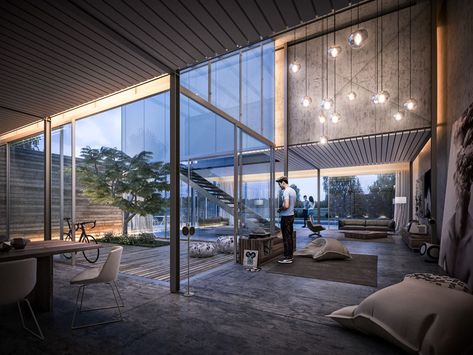

- #Rendering glass in maxwell sketchup tutorial install
- #Rendering glass in maxwell sketchup tutorial zip
- #Rendering glass in maxwell sketchup tutorial download
They require a slightly different setup process. Some are a single color, others use an image. Right click on the material and select Edit Material. The part of the model wire-frame associated with that material will turn yellow. Materials are listed in the left side bar under Models. The material libraries we downloaded earlier will be our templates.

To get photo realistic effects you'll need to edit the materials in your model. This can easily be changed to fill in the faces with the appropriate colors, making it a little easier to see what's going on. The model will be converted and the Kerkythea Rendering System will start.īy default, Kerkythea will show a wireframe of the model. Next select where to export model and hit OK. Use the same settings as shown in the example above, click OK. To export your model click on the Export model to Kerkythea button in the Kerkythea toolbar.
#Rendering glass in maxwell sketchup tutorial zip
#Rendering glass in maxwell sketchup tutorial download
You'll need to download some material libraries to make lifelike renderings of plastic, metal, etc.
#Rendering glass in maxwell sketchup tutorial install
Extract SU2KT_3_17.zip (Kerkythea SketchUp plugin), and follow the su2kt_Install.txt file to install the SketchUp plugin. Run Kerkythea2008.exe to install the application. Once you have a model, download the following: If you haven't done this already, check out our " Build 3D models from Eagle files" tutorial.

You'll need to have a model built and SketchUp installed on your computer.

The goal of this tutorial is to help you make your first lifelike PCB rendering with Kerkythea. You can render images at any quality or resolution, though it is somewhat more complicated to work with. Since Kerkythea is open source there are no restrictions at all, unlike the Maxwell plugin for SketchUp. A community developed plugin can import Google SketchUp 3D models into Kerkythea, so we can use it to render boards made with EagleUp. Kerkythea is an open source rendering application that makes life-like images.


 0 kommentar(er)
0 kommentar(er)
